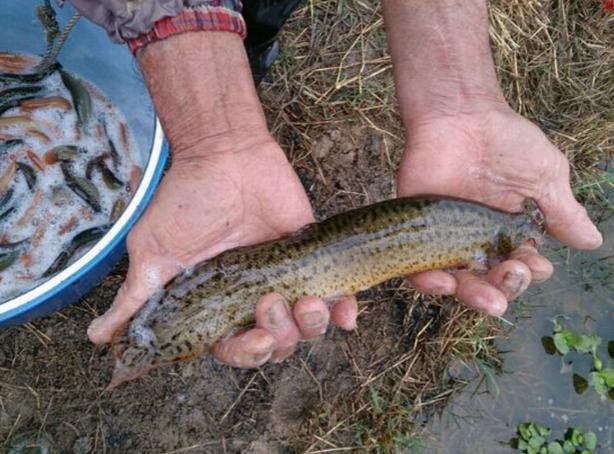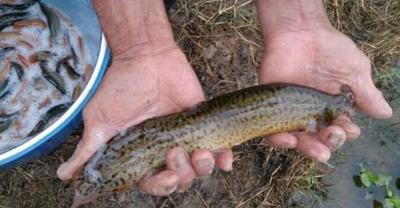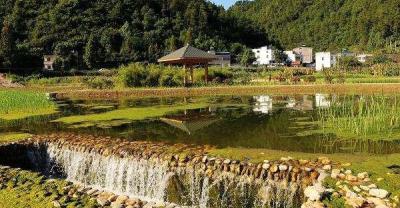Introduction of Taiwan eel and Misgurnus anguillicaudatus and its high yield and high efficiency culture techniques
Introduction of Taiwan eel and Misgurnus anguillicaudatus and its high yield and high efficiency culture techniques
1 introduction of Taiwan eel and Loach
Taiwan eel Loach is a member of the Loach family, which has the laudatory name of "the ginseng in the water" and "the king of the Loach". Its individual is large, grows fast and has a strong ability to adapt. Tainan County, Taiwan is the producing area of Taiwan eel and Loach. In ancient times, Taiwan was still connected to the mainland. Under the action of crustal movement, the connecting part gradually sank into the sea, forming a strait and the island of Taiwan. It is precisely because of the partition of the strait that different varieties have been formed. in this environment, Taiwan eel and Loach have been produced through slow evolution. Compared with common Misgurnus anguillicaudatus, the shape of Taiwan eel Loach is 3-4 times larger, and its length can reach 16-20 cm. In the body of Taiwan eel Loach, small scales exist under the skin, the color is bluish black, there are 5 pairs of beard seeds, the scales are small and round. Taiwan eel Misgurnus anguillicaudatus has very rich nutritional value, high protein level and low fat level, which can reduce blood lipids and blood pressure. According to the detection and control, there are 22.6g protein, 2.9g fat, 2.5g carbohydrate, 1.6g ash, 51 mg calcium, 154mg phosphorus, 3 mg iron, 0.08mg sulfur, 0.16mg riboflavin and 5 mg nicotinic acid per 100g.
2 High-yield and high-efficiency culture techniques of Taiwan eel and Loach
2.1 Construction and site selection
For Taiwan eel Misgurnus anguillicaudatus, the selected breeding site should have sufficient water source and good water quality, at the same time, there is no pollution, and in line with the standard of fishery water. Usually, the pond is a suitable breeding site, when building the pond, the shape is rectangular, the length is east-west direction, the width is north-south direction, the inlet and drainage pipes are set on both sides, and the pipe production is made of PVC material, using double-layer sieve silk mesh to fasten the entrance of the water pipe and the drainage pipe mouth, to prevent pests and insect eggs from entering the pond through the inlet pipe mouth, and to prevent Taiwan eel Loach from escaping from the drainage pipe mouth. The best depth of the pond is 1-1.5 m, and the area is 1.3-2 hm2. After the pond is built, it should be exposed to the sun for 30 days, preferably until it is cracked. If the pond is old, remove excess silt from the bottom thoroughly, then leave water about 10 cm deep at the bottom of the pond and clean it with quicklime at a dosage of 80,100 kg/667 m2. After clearing the pond for 3 days, fresh water was injected into the pond at a depth of 30 cm. The fermented farm manure was applied at a dosage of 200 kg/667 / m ~ 2 in order to cultivate plankton in water, ensure that Taiwan eel and Loach have food to eat after entering the pond, and promote the reduction of culture cost. In addition, in order to avoid the escape of Taiwan eel and Loach, it is necessary to tamp the bottom of the pond and spread the clay on the bottom and slope of the pond with a thickness of 15 cm and 20 cm. At the same time, the pond should be strengthened and raised around the pond, with the water surface as a reference, 30 cm higher than the pond.
2.2 Seedling stocking
In the process of selecting and purchasing Misgurnus anguillicaudatus seedlings, special attention should be paid to its germplasm and specifications. Taiwan eel Loach also has this problem. Not only its growth rate and viability will be directly affected by germplasm quality, but also its breeding yield and economic benefits will be limited. Therefore, farmers can first buy the original species of Taiwan eel Loach, the individual should be more than 150g, and then propagate their parents, and then select high-quality seedlings. In general, the best seedling length is about 4 cm, 600 × 750 tails / kg, and has uniform size and strong reverse water. The stocking density can be released after the seedling selection is completed. In view of the fact that the stocking density has an effect on the breeding yield and the market time of commercial Loach, it is necessary to scientifically determine the stocking density. In general, pond conditions, seedling specifications, growth cycle and other factors should be comprehensively considered to ensure that the stocking density adapts to its own culture conditions [2]. Under the condition of monoculture of eel and Loach in Taiwan, the optimum density is 30,000 ~ 50,000 inch seedlings per 667 m2, and the seedlings are released from the end of May to the beginning of June, and the time on the market is about Mid-Autumn Festival and National Day. When raising Cun tablets, soaking and disinfection can be carried out by conventional drugs and methods to prevent infection and bacteria from being brought into the pond. In the process of entering the pool, the difference of water temperature should be strictly controlled to ensure that the difference is less than 2 ℃.
2.3 feeding and management
In the initial stage of stocking, it is necessary to create a safe and comfortable culture environment, and measures can be taken to remove pests from ponds, cultivate water quality, and at the same time ensure that there are no enemy organisms, especially when the seedlings are released for about 10 days, pay attention to prevent breeding water centipedes and other enemies. In addition, the water quality of the pond should be in line with the relevant requirements, and the water is rich in palatable natural bait organisms. In the early stage of splashing, small and medium-sized plankton in water can be fed, but if only relying on natural bait, its demand can not be met, and artificial feed needs to be supplemented into it. Eel meal can be used in the initial feeding, the daily feeding amount should be strictly controlled, usually 50-100g can be used for 100000 tails, and the feeding amount should be increased gradually. For inch tablets, palatable formula feed can be put into it, based on the overall basis, about 3% is the appropriate daily feed. The water in the pond should be fertile, and the best transparency is about 30 cm. In daily water quality control, microbial preparations and mature manure can be properly applied with reference to the changes of water quality and transparency, and at the same time, an appropriate amount of new water should be replenished. Microbial preparations can often use probiotics and photosynthetic bacteria to promote the improvement of substrate and regulate the water quality to ensure the stability of water quality and reduce the amount of drugs used. The feed should be of high quality, which contains about 40% crude protein, so as to improve the growth rate of Taiwan eel Loach and ensure its physiological health. At the same time, high-quality feed can also reduce the production of waste and reduce the negative impact on water quality. According to the specification of Taiwan eel Loach, daily feeding is divided into three or four times, and if conditions permit, a small amount of multiple feeding should be adopted. Both sinking particles and floating particles can be used as bait, but no matter which one is chosen, it must be palatable. During the hot season, bait is not suitable for feeding during the day. After Cunpian and water spray were cultured for 1 month and 2 months respectively, the individual differences of Taiwan eel and Loach began to appear because of the problem of eating unevenness. At this time, separate culture should be carried out once a month to increase the yield. In the later stage, the small ones are left behind and the big ones are captured, and the rotation is made once every 2 weeks to achieve a balanced listing.
2.4 Daily Management
The pond is inspected three times a day, once in the morning, once in the morning and once in the evening, to carefully observe the feeding situation of Taiwan eel Loach, the changes of water quality and the activities of Taiwan eel Loach, and to carry out the escape work well; the water quality of the pond is kept in a fertile and living state, and yellowish green water is the best; regularly sprinkle drugs to prevent fish diseases, often clean the feeding table, disinfect regularly, and treat the disease in time after the disease occurs. Always check the escape prevention facilities and inlets and drains, and immediately repair and replace them if there is any damage; in bad weather, closely observe the floating head of eel and Loach in Taiwan; if there is a serious floating head, it is necessary to change fresh water in time; it is necessary to keep a good record of breeding accurately and comprehensively.
2.5 Prevention of diseases
The whole pond is regularly sprinkled with bleach and quicklime to improve the water quality and prevent diseases at the same time; when it is found that snake eggs, mouse eggs and other enemy organisms appear in the pond, they should be removed immediately; when dead Loach is found in the pond, it should be fished out in time to avoid other Loach infection, and at the same time to find and analyze the cause of death of Loach and carry out treatment.

- Prev

The harm of too high or too low pH value to aquaculture and its control measures
PH is an important hydrochemical index in aquaculture and an index to evaluate the acidity and basicity of water body. Generally, the PH value of 6.5-8.0 is regarded as neutral, and the PH value is 5.0-6.5.
- Next

Gingko saplings cultivation skills master the method to survive
If you want to plant ginkgo trees, you should first know which planting method is suitable for this kind of tree. Ginkgo this kind of tree sowing planting effect is slow, and grow too long effect...
Related
- On the eggshell is a badge full of pride. British Poultry Egg Market and Consumer observation
- British study: 72% of Britons are willing to buy native eggs raised by insects
- Guidelines for friendly egg production revised the increase of space in chicken sheds can not be forced to change feathers and lay eggs.
- Risk of delay in customs clearance Australia suspends lobster exports to China
- Pig semen-the Vector of virus Transmission (4)
- Pig semen-the Vector of virus Transmission (3)
- Five common causes of difficult control of classical swine fever in clinic and their countermeasures
- Foot-and-mouth disease is the most effective way to prevent it!
- PED is the number one killer of piglets and has to be guarded against in autumn and winter.
- What is "yellow fat pig"? Have you ever heard the pig collector talk about "yellow fat pig"?

